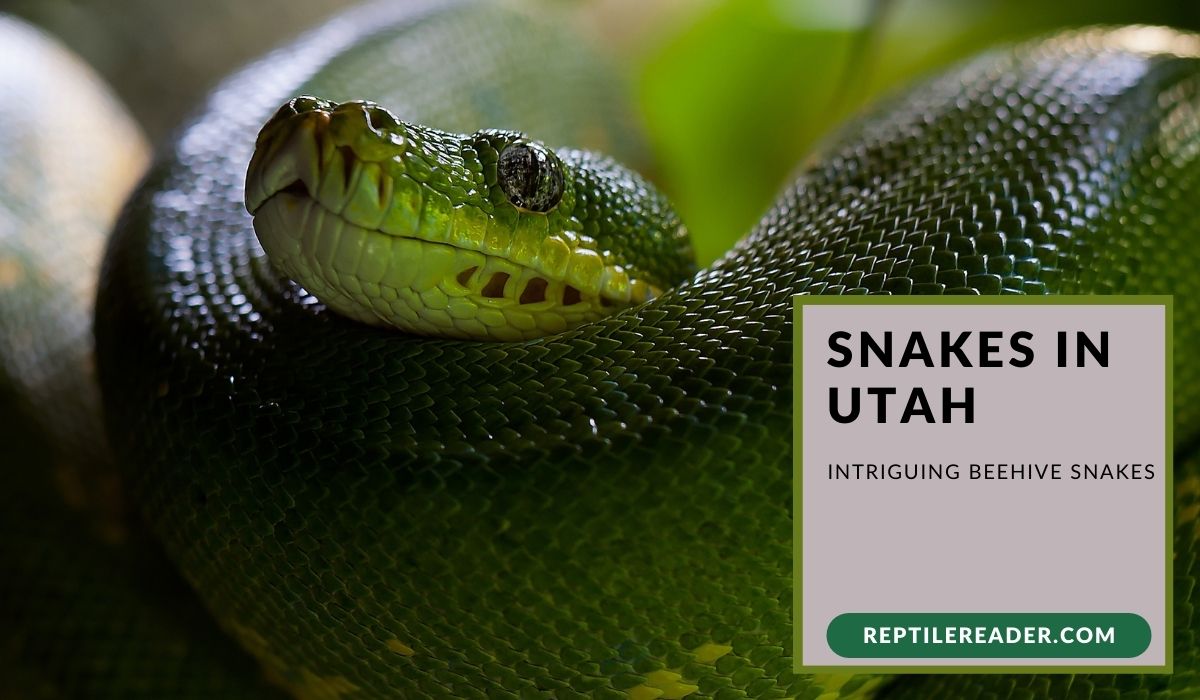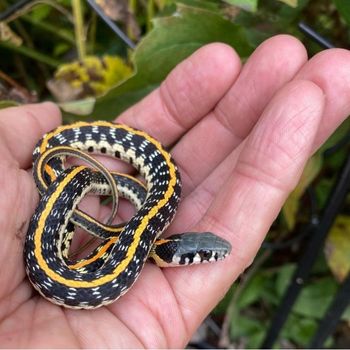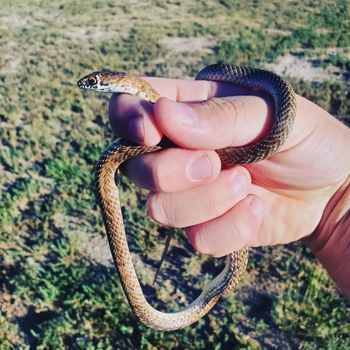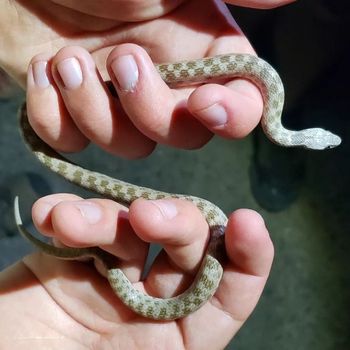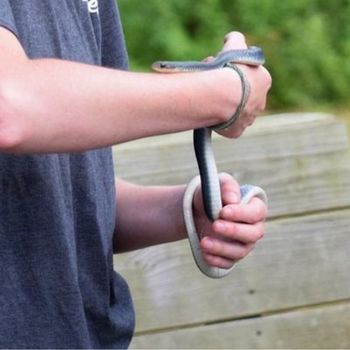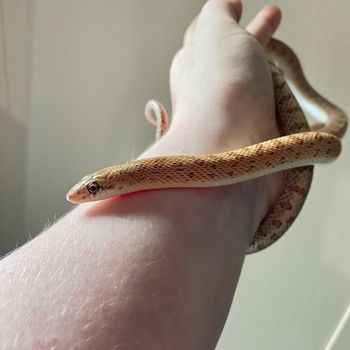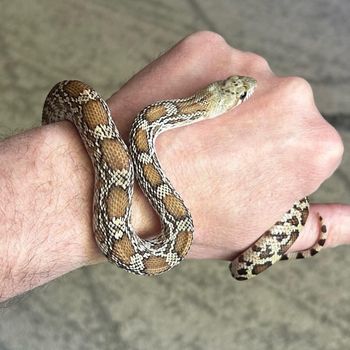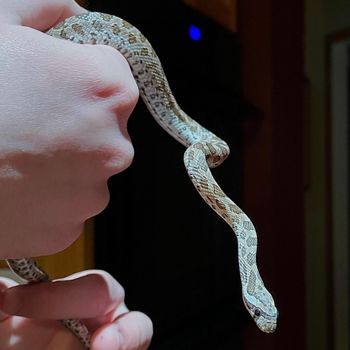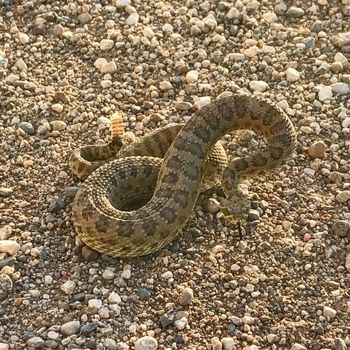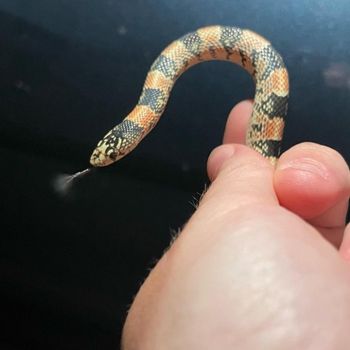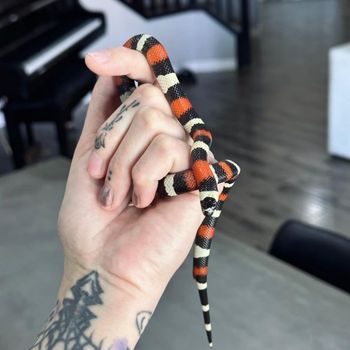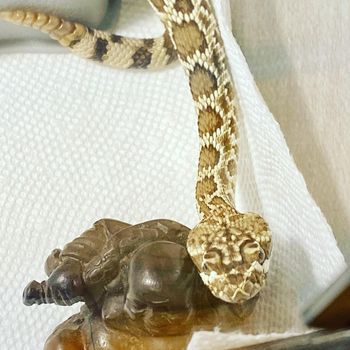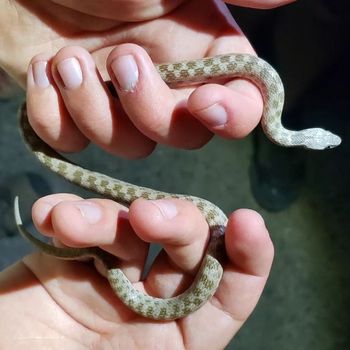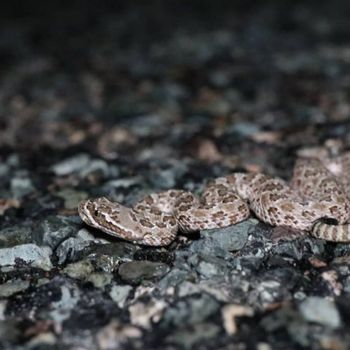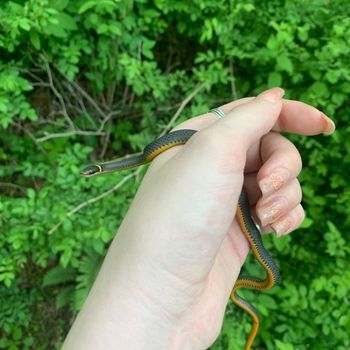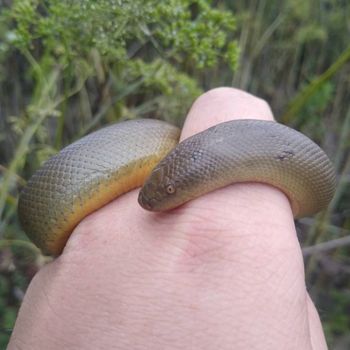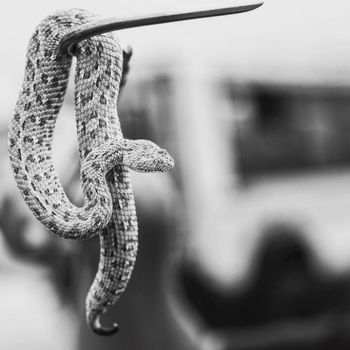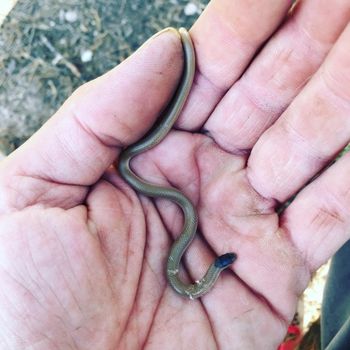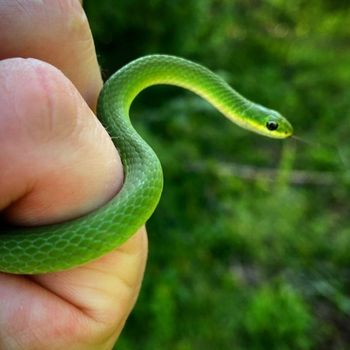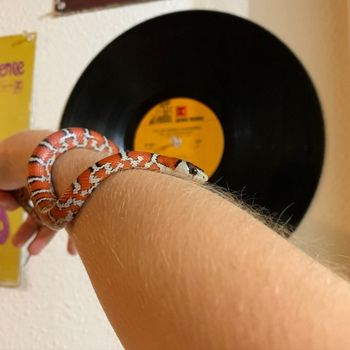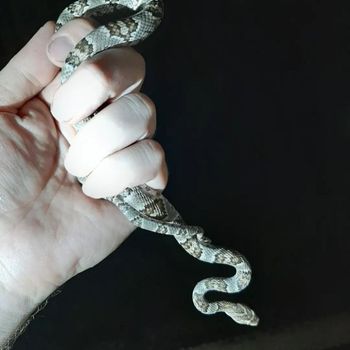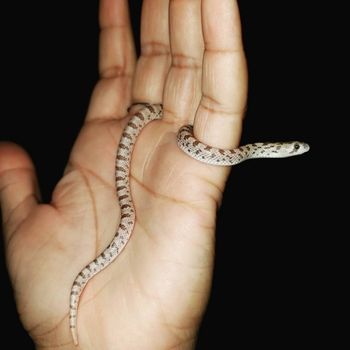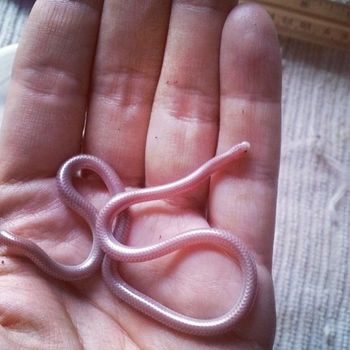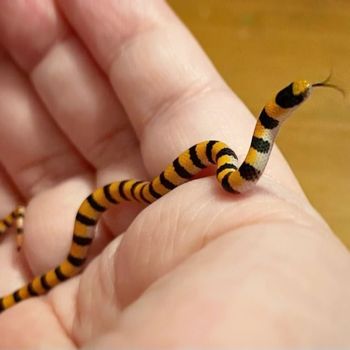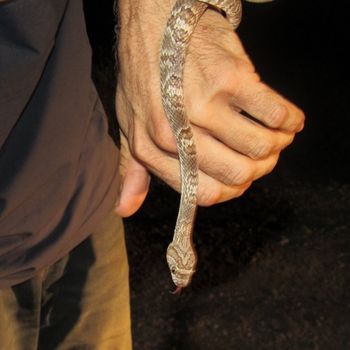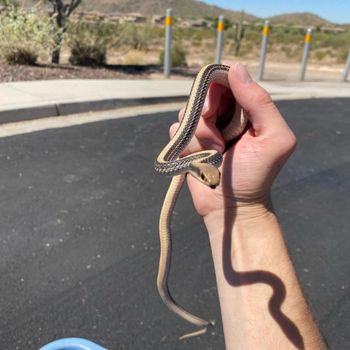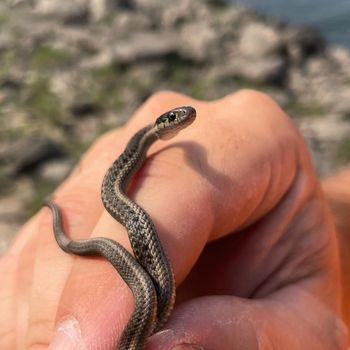Snakes in Utah: Intriguing Beehive Snakes
Oh, hey there! Are you curious about the slithering residents of Utah? Well, you’re in the right place, my friend! From the dry deserts to the picturesque valleys, Utah houses quite an interesting mix of snakes.
While some people might shudder at the thought, you’ll be surprised to know that there are 31 species of snakes found in this state. That’s right! Thirty-one!
So, come along and let’s explore the fascinating world of these legless creatures that call Utah their home. You never know, you might just be in for a hiss-terical journey!
| # | Name | Details | Image |
| 1 | Black-Necked Garter Snake (Thamnophis cyrtopsis) |
| 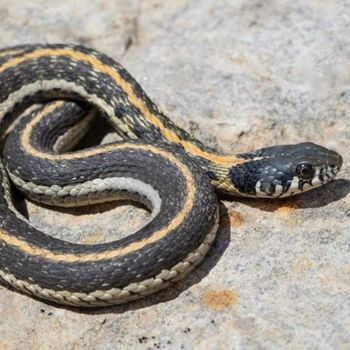 |
| 2 | California Kingsnake (Lampropeltis californiae) |
| 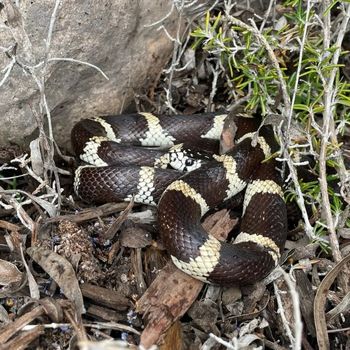 |
| 3 | Coachwhip Snake (Masticophis flagellum) |
| 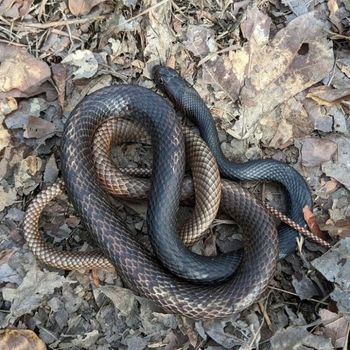 |
| 4 | Desert Night Snake (Eridiphas slevini) |
| 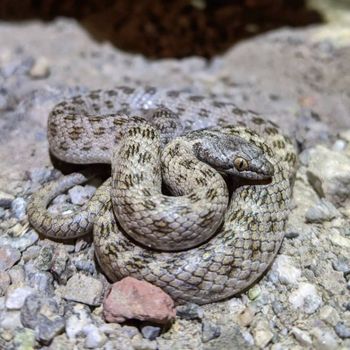 |
| 5 | Eastern Racer (Coluber constrictor) |
| 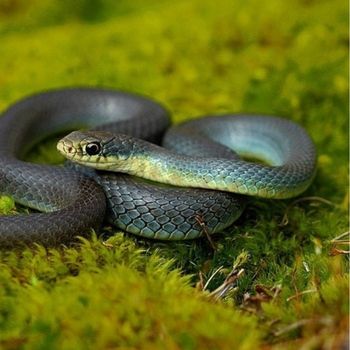 |
| 6 | Glossy Snake (Arizona elegans) |
|  |
| 7 | Gophersnake (Pituophis catenifer) |
| 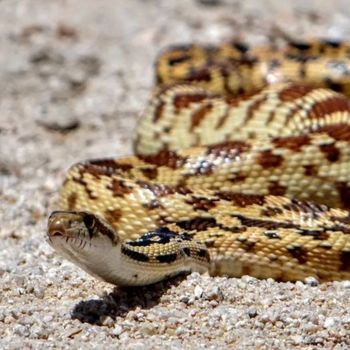 |
| 8 | Great Basin Rattlesnake (Crotalus oreganus lutosus) |
| 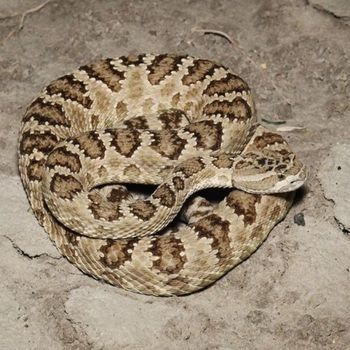 |
| 9 | Great Plains Rat Snake (Pantherophis emoryi) |
| 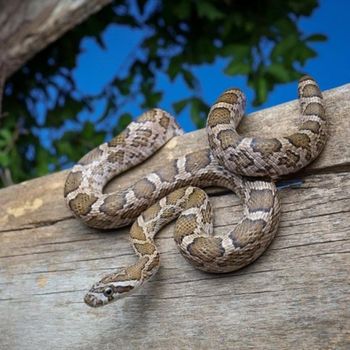 |
| 10 | Hopi Rattlesnake (Crotalus viridis nuntius) |
| 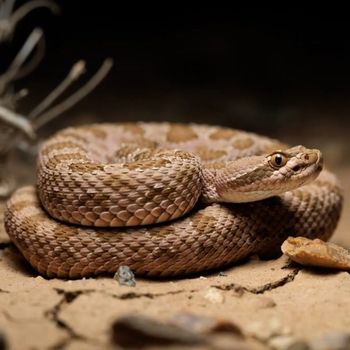 |
| 11 | Long-Nosed Snake (Rhinocheilus lecontei) |
| 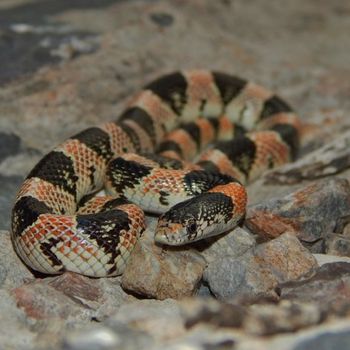 |
| 12 | Midget Faded Rattlesnake (Crotalus oreganus concolor) |
| 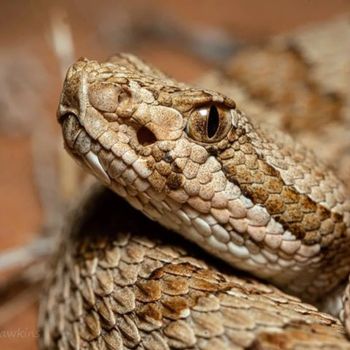 |
| 13 | Milksnake (Lampropeltis triangulum) |
| 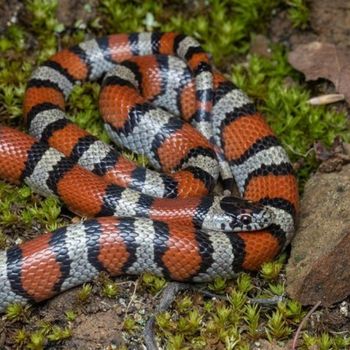 |
| 14 | Mojave Green Rattlesnake (Crotalus scutulatus scutulatus) |
| 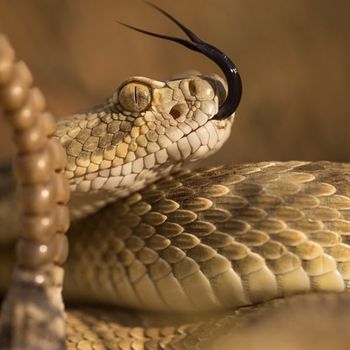 |
| 15 | Night Snake (Hypsiglena torquata) |
| 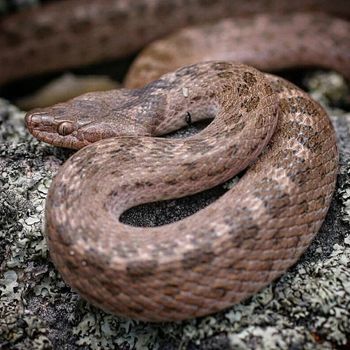 |
| 16 | Prairie Rattlesnake (Crotalus viridis) |
| 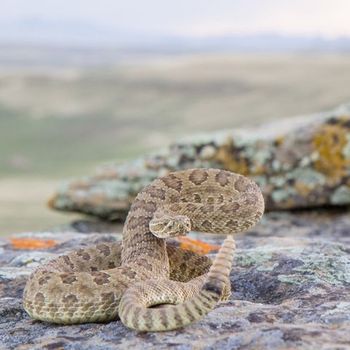 |
| 17 | Ringneck Snake (Diadophis punctatus) |
|  |
| 18 | Rubber Boa (Charina bottae) |
| 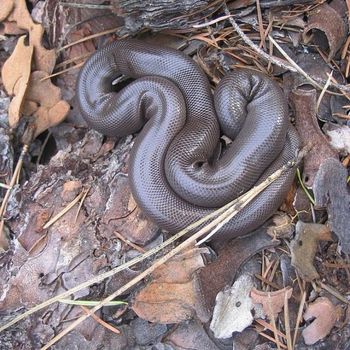 |
| 19 | Sidewinder (Crotalus cerastes) |
| 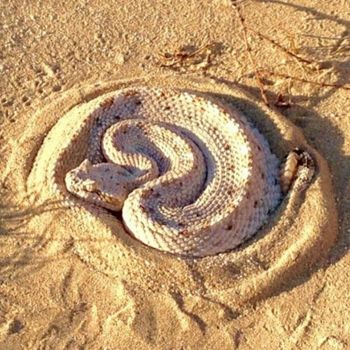 |
| 20 | Smith’s Black-Headed Snake (Tantilla hobartsmithi) |
| 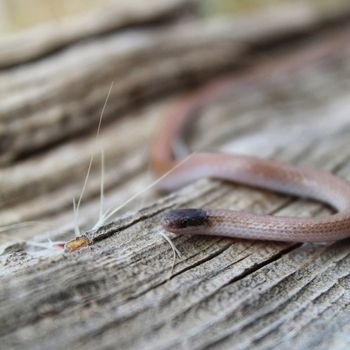 |
| 21 | Smooth Green Snake (Opheodrys vernalis) |
| 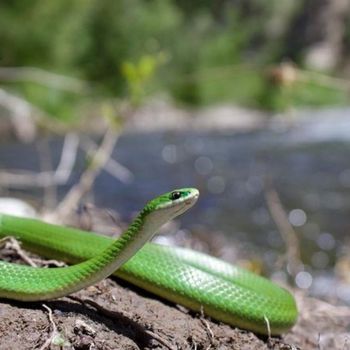 |
| 22 | Sonora Mountain Kingsnake (Lampropeltis pyromelana) |
| 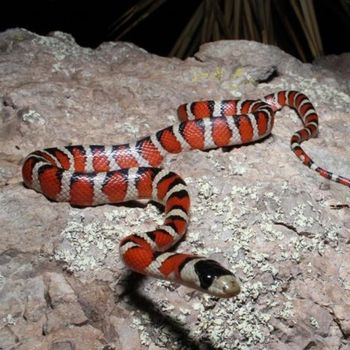 |
| 23 | Sonoran Lyre Snake (Trimorphodon lambda) |
| 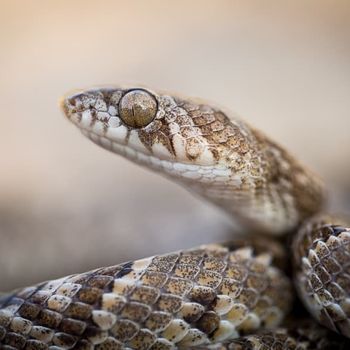 |
| 24 | Speckled Rattlesnake (Crotalus mitchellii) |
|  |
| 25 | Spotted Leaf-Nosed Snake (Phyllorhynchus decurtatus) |
| 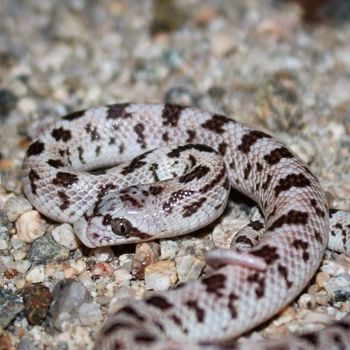 |
| 26 | Striped Whipsnake (Masticophis taeniatus) |
| 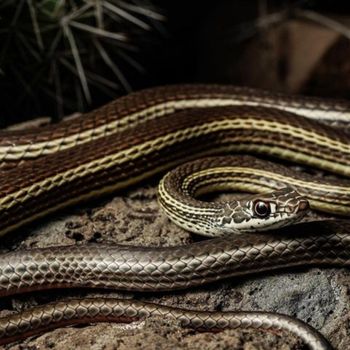 |
| 27 | Western Blind Snake (Typhlops vermicularis) |
|  |
| 28 | Western Ground Snake (Sonora semiannulata) |
| 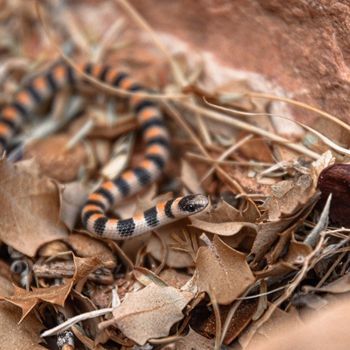 |
| 29 | Western Lyre Snake (Trimorphodon biscutatus) |
| 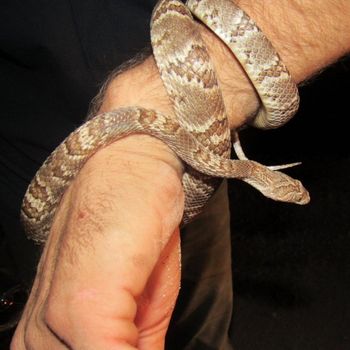 |
| 30 | Western Patch-Nosed Snake (Salvadora hexalepis) |
| 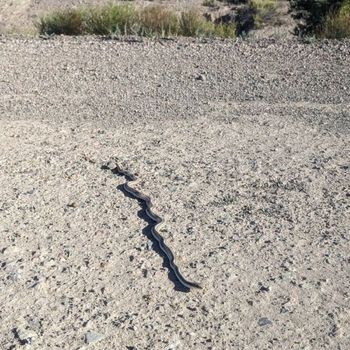 |
| 31 | Western Terrestrial Garter Snake (Thamnophis elegans) |
| 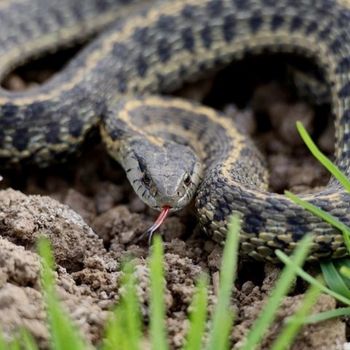 |
31 Snakes You Can Find in Utah
In the state of Utah, a fascinating array of serpents can be found slithering through its diverse landscapes. From venomous to harmless, each species has its unique story to tell. Below, we’ll explore the wonders of these often misunderstood creatures of Utah, from their natural habitats and behaviors to the challenges they face in our changing world.
1. Black-Necked Garter Snake
- Scientific Name: Thamnophis cyrtopsis
- Common Name: Black-necked garter snake
- Size: Up to 3.3 feet (1 meter)
- Natural Habitat: Near water sources, such as streams and ponds, in grasslands, forests, and rocky areas
- Color: Olive green or brownish with yellow or red stripes
- Habitat: Near water sources, such as streams and ponds, in grasslands, forests, and rocky areas
- Maximum Size: Up to 3.3 feet (1 meter)
- Diet: Small fish, amphibians, and invertebrates
- Reproduction: Lay eggs in clutches of 10-40
- Venom: Mildly venomous, rear-fanged, but not harmful to humans
- Conservation: Least concern
The Black-Necked Garter Snake (Thamnophis cyrtopsis) is a species of snake that can grow up to 3.3 feet (1 meter) in length. They exhibit an olive green or brownish coloration with yellow or red stripes. These mildly venomous reptiles of Utah inhabit areas near water sources such as streams and ponds, and can also be found in grasslands, forests, and rocky terrains. They are diurnal, terrestrial creatures that feed on small fish, amphibians, and invertebrates. Black-Necked Garter Snakes are oviparous, laying 10-40 eggs in a clutch. Despite their venomous nature, they pose no harm to humans and are currently listed as being of “Least Concern” in terms of conservation status.
2. California Kingsnake
- Scientific Name: Lampropeltis californiae
- Common Name: California kingsnake
- Size: Up to 4 feet (1.2 meters)
- Natural Habitat: Various habitats, including forests, grasslands, and deserts
- Color: Black or brown with white or yellow bands
- Habitat: Various habitats, including forests, grasslands, and deserts
- Maximum Size: Up to 4 feet (1.2 meters)
- Diet: Rodents, birds, reptiles, and amphibians
- Reproduction: Lay eggs in clutches of 3-24
- Venom: Non-venomous
- Conservation: Least concern
The California Kingsnake (Lampropeltis californiae) is a non-venomous snake found throughout California’s diverse habitats, such as forests, grasslands, and deserts. They can grow up to 4 feet (1.2 meters) in length and are usually black or brown with white or yellow bands. Being nocturnal and terrestrial, they mainly feed on rodents, birds, reptiles, and amphibians. These snakes reproduce by laying egg clutches ranging from 3 to 24 eggs. Fortunately, their conservation status is classified as “Least Concern.”
3. Coachwhip Snake
- Scientific Name: Masticophis flagellum
- Common Name: Coachwhip snake
- Size: Up to 8 feet (2.4 meters)
- Natural Habitat: Deserts, grasslands, and woodlands
- Color: Variety of colors, including tan, brown, pink, and black
- Habitat: Deserts, grasslands, and woodlands
- Maximum Size: Up to 8 feet (2.4 meters)
- Diet: Lizards, small mammals, birds
- Reproduction: Lay eggs in clutches of 3-15
- Venom: Non-venomous
- Conservation: Least concern
The Coachwhip Snake, scientifically known as Masticophis flagellum, is a swift, diurnal serpent native to deserts, grasslands, and woodlands. Growing up to 8 feet (2.4 meters) long, this non-venomous snake displays a variety of colors, from tan, brown, pink, to black. As adept hunters, Coachwhip Snakes primarily feed on lizards, small mammals, and birds. Mating leads to egg clutches ranging from 3-15. Despite their striking appearance, their conservation status remains classified as least concern.
4. Desert Night Snake
- Scientific Name: Eridiphas slevini
- Common Name: Desert night snake
- Size: 12 to 26 inches (30 to 66 cm)
- Natural Habitat: Deserts, semiarid habitats, and grasslands
- Color: Pale brown or gray with dark brown spots
- Habitat: Deserts, semiarid habitats, and grasslands
- Maximum Size: 12 to 26 inches (30 to 66 cm)
- Diet: Lizards, small snakes, and amphibians
- Reproduction: Lay eggs in clutches of 4-12
- Venom: Mildly venomous, not dangerous to humans
- Conservation: Least concern
The Desert Night Snake (Eridiphas slevini) is a small, nocturnal reptile commonly found in deserts, semi-arid habitats, and grasslands. Ranging in size from 12 to 26 inches (30 to 66 cm), its coloration consists of a pale brown or gray base with dark brown spots. Known for being secretive, its diet primarily consists of lizards, small snakes, and amphibians. Reproducing via egg clutches of 4-12, this mildly venomous snake poses no significant threats to humans and falls under the Least Concern conservation status.
5. Eastern Racer
- Scientific Name: Coluber constrictor
- Common Name: Eastern racer
- Size: Up to 6 feet (1.8 meters)
- Natural Habitat: Wide range of habitats, including grasslands, woodlands, and coastal areas
- Color: Black, blue-gray, or brown with a white or pale underbelly
- Habitat: Wide range of habitats, including grasslands, woodlands, and coastal areas
- Maximum Size: Up to 6 feet (1.8 meters)
- Diet: Rodents, lizards, insects, frogs, and birds
- Reproduction: Lay eggs in clutches of 5-40
- Venom: Non-venomous
- Conservation: Least concern
The Eastern Racer (Coluber constrictor) is a fast-moving, diurnal snake that can grow up to 6 feet (1.8 meters) in length. With a variety of colors such as black, blue-gray, or brown and a white or pale underbelly, it can be found in a wide range of habitats including grasslands, woodlands, and coastal areas. Its diet consists of rodents, lizards, insects, frogs, and birds. Eastern Racers are non-venomous and lay eggs in clutches of 5-40. They are considered a species of least concern in conservation.
6. Glossy Snake
- Scientific Name: Arizona elegans
- Common Name: Glossy snake
- Size: Up to 5 feet (1.5 meters)
- Natural Habitat: Desert, grassland, and scrub habitats
- Color: Gray or brown with dark blotches
- Habitat: Desert, grassland, and scrub habitats
- Maximum Size: Up to 5 feet (1.5 meters)
- Diet: Small mammals, lizards, and snakes
- Reproduction: Lay eggs in clutches of 3-12
- Venom: Non-venomous
- Conservation: Least concern
The Glossy Snake (Arizona elegans) is a non-venomous, nocturnal reptile found in desert, grassland, and scrub habitats across North America. Measuring up to 5 feet (1.5 meters) in length, this resident of Utah boasts a gray or brown coloration with dark blotches. As a terrestrial creature, the Glossy Snake feeds on small mammals, lizards, and other snakes, and reproduces by laying egg clutches of 3 to 12. With a conservation status of ‘least concern’, it continues to thrive in its native regions.
7. Gophersnake
- Scientific Name: Pituophis catenifer
- Common Name: Gophersnake
- Size: Up to 7 feet (2.1 meters)
- Natural Habitat: Deserts, grasslands, forests, and agricultural areas
- Color: Yellow, brown, or cream with dark spots
- Habitat: Deserts, grasslands, forests, and agricultural areas
- Maximum Size: Up to 7 feet (2.1 meters)
- Diet: Mammals, birds, eggs, and reptiles
- Reproduction: Lay eggs in clutches of 2-24
- Venom: Non-venomous
- Conservation: Least concern
The Gophersnake (Pituophis catenifer) is a non-venomous snake species measuring up to 7 feet (2.1 meters) in length. They exhibit yellow, brown, or cream-colored scales with dark spots. Gophersnakes thrive in various habitats such as deserts, grasslands, forests, and agricultural areas. These diurnal, burrow-dwelling reptiles primarily feed on mammals, birds, eggs, and other reptiles. Gophersnakes reproduce through laying egg clutches, consisting of 2-24 eggs. Currently, they have a conservation status of least concern.
8. Great Basin Rattlesnake
- Scientific Name: Crotalus oreganus lutosus
- Common Name: Great basin rattlesnake
- Size: Up to 5 feet (1.5 meters)
- Natural Habitat: Desert, rocky areas, and woodlands
- Color: Brown or gray with brown blotches
- Habitat: Desert, rocky areas, and woodlands
- Maximum Size: Up to 5 feet (1.5 meters)
- Diet: Small mammals, birds, and reptiles
- Reproduction: Lay eggs in clutches of 4-21
- Venom: Venomous
- Conservation: Least concern
The Great Basin Rattlesnake (Crotalus oreganus lutosus) is a venomous snake that can grow up to 5 feet (1.5 meters) in length. Its coloration is brown or gray with brown blotches, providing excellent camouflage in its desert, rocky, and woodland habitats. This nocturnal and terrestrial species primarily feeds on small mammals, birds, and reptiles. It reproduces by laying eggs in clutches of 4-21. Despite being venomous, its conservation status is listed as least concern.
9. Great Plains Rat Snake
- Scientific Name: Pantherophis emoryi
- Common Name: Great plains rat snake
- Size: Up to 5 feet (1.5 meters)
- Natural Habitat: Grasslands, prairies, and open woodlands
- Color: Gray or brown with dark blotches
- Habitat: Grasslands, prairies, and open woodlands
- Maximum Size: Up to 5 feet (1.5 meters)
- Diet: Rodents, birds, and eggs
- Reproduction: Lay eggs in clutches of 5-20
- Venom: Non-venomous
- Conservation: Least concern
The Great Plains Rat Snake (Pantherophis emoryi) is a non-venomous snake species that can reach up to 5 feet (1.5 meters) in length. They exhibit gray or brown coloring with dark blotches and inhabit grasslands, prairies, and open woodlands of Utah. These snakes are primarily nocturnal and terrestrial, preying on rodents, birds, and eggs to maintain a healthy diet. Females lay eggs in clutches of 5-20, contributing to their conservation status of “least concern.”
10. Hopi Rattlesnake
- Scientific Name: Crotalus viridis nuntius
- Common Name: Hopi rattlesnake
- Size: Up to 3.3 feet (1 meter)
- Natural Habitat: Deserts, shrublands, and rocky terrains
- Color: Brown or gray with dark banding
- Habitat: Deserts, shrublands, and rocky terrains
- Maximum Size: Up to 3.3 feet (1 meter)
- Diet: Small mammals, lizards, and birds
- Reproduction: Lay eggs in clutches of 4-21
- Venom: Venomous (hemotoxic venom)
- Conservation: Least concern
The Hopi Rattlesnake (Crotalus viridis nuntius) is a venomous reptile found in deserts, shrublands, and rocky terrains of Utah. It can grow up to 3.3 feet (1 meter) and sports a brown or gray coloration with dark banding. As a nocturnal and terrestrial creature, it primarily feeds on small mammals, lizards, and birds. Females lay eggs in clutches of 4-21, and their hemotoxic venom causes serious harm to their prey. Currently, the Hopi Rattlesnake is listed as a species of least concern in conservation status.
11. Long-Nosed Snake
- Scientific Name: Rhinocheilus lecontei
- Common Name: Long-nosed snake
- Size: Up to 30 – 52 inches (76 – 132 cm)
- Natural Habitat: Semi-arid or desert areas, grasslands, scrublands, and rocky terrain
- Color: Black or brown with red, cream, or white bands
- Habitat: Semi-arid or desert areas, grasslands, scrublands, and rocky terrain
- Maximum Size: Up to 30 – 52 inches (76 – 132 cm)
- Diet: Rodents, lizards, and small mammals
- Reproduction: Lay eggs in clutches of 3-10
- Venom: Non-venomous
- Conservation: Least concern
The Long-Nosed Snake (Rhinocheilus lecontei) is a non-venomous reptile that reaches lengths of 30-52 inches (76-132 cm). Its distinct black or brown coloration features red, cream, or white bands. Commonly found in semi-arid or desert areas, grasslands, scrublands, and rocky terrain, this nocturnal creature is terrestrial, non-aggressive, and primarily feeds on rodents, lizards, and small mammals. Long-nosed snakes reproduce by laying clutches of 3-10 eggs, and their conservation status is listed as least concern.
12. Midget Faded Rattlesnake
- Scientific Name: Crotalus oreganus concolor
- Common Name: Midget faded rattlesnake
- Size: Up to 30 inches (76 cm)
- Natural Habitat: Rocky slopes, sagebrush deserts, and grasslands
- Color: Light gray or tan with faded blotches
- Habitat: Rocky slopes, sagebrush deserts, and grasslands
- Maximum Size: Up to 30 inches (76 cm)
- Diet: Small mammals, lizards, and birds
- Reproduction: Lays eggs in clutches of 4-6
- Venom: Venomous, with hemotoxic venom
- Conservation: Least concern
The Midget Faded Rattlesnake (Crotalus oreganus concolor) is a small, venomous snake growing up to 30 inches (76 cm) long. It has a light gray or tan coloration with faded blotches, making it well camouflaged in its habitat of rocky slopes, sagebrush deserts, and grasslands. The snake is nocturnal and terrestrial, preying on small mammals, lizards, and birds. It reproduces by laying eggs in clutches of 4-6, and its venom contains hemotoxins. The conservation status is currently listed as least concern.
13. Milksnake
- Scientific Name: Lampropeltis triangulum
- Common Name: Milksnake
- Size: 20 to 60 inches (50 to 150 cm)
- Natural Habitat: Various habitats, including forests, grasslands, and rocky hillsides
- Color: Red or orange with black and white bands
- Habitat: Various habitats, including forests, grasslands, and rocky hillsides
- Maximum Size: 20 to 60 inches (50 to 150 cm)
- Diet: Rodents, birds, eggs, and other reptiles
- Reproduction: Lay eggs in clutches of 2-17
- Venom: Non-venomous
- Conservation: Least concern
The Milksnake (Lampropeltis triangulum) is a non-venomous and nocturnal reptile, ranging in size from 20 to 60 inches (50 to 150 cm) in length. It exhibits vibrant colors like red or orange, with black and white bands. Milksnakes inhabit various environments, such as forests, grasslands, and rocky hillsides. Their secretive nature makes them difficult to spot. The species primarily feeds on rodents, birds, eggs, and other reptiles. Reproduction involves laying egg clutches of 2-17. Currently, their conservation status is of least concern.
14. Mojave Green Rattlesnake
- Scientific Name: Crotalus scutulatus scutulatus
- Common Name: Mojave green rattlesnake
- Size: Up to 4 feet (1.2 meters)
- Natural Habitat: Deserts, grasslands, and scrublands
- Color: Greenish-gray with dark diamond-shaped markings
- Habitat: Deserts, grasslands, and scrublands
- Maximum Size: Up to 4 feet (1.2 meters)
- Diet: Rodents, lizards, and birds
- Reproduction: Ovoviviparous, producing 4-17 live offspring
- Venom: Highly venomous with neurotoxic and hemotoxic properties
- Conservation: Least concern
The Mojave Green Rattlesnake (Crotalus scutulatus scutulatus) is a highly venomous snake, growing up to 4 feet (1.2 meters) in length. Boasting greenish-gray, diamond-shaped markings, it inhabits deserts, grasslands, and scrublands. This aggressive, nocturnal creature preys on rodents, lizards, and birds. Unlike many reptiles, it is ovoviviparous, producing 4-17 live offspring. Its venom contains neurotoxic and hemotoxic properties, making it as deadly as it is beautiful. Fortunately, its conservation status is of least concern.
15. Night Snake
- Scientific Name: Hypsiglena torquata
- Common Name: Night snake
- Size: Up to 20 to 36 inches (51 to 91 cm)
- Natural Habitat: Deserts, grasslands, shrublands, and rocky areas
- Color: Light gray, beige or pale brown with dark blotches
- Habitat: Deserts, grasslands, shrublands, and rocky areas
- Maximum Size: Up to 20 to 36 inches (51 to 91 cm)
- Diet: Lizards, small snakes, and amphibians
- Reproduction: Lay eggs in clutches of 3-9
- Venom: Mildly venomous, not dangerous to humans
- Conservation: Least concern
The Night Snake (Hypsiglena torquata) is a mildly venomous, nocturnal reptile found in deserts, grasslands, shrublands, and rocky areas. Measuring 20-36 inches in length, it sports a light gray, beige, or pale brown coloration with dark blotches. This secretive snake primarily feasts on lizards, small snakes, and amphibians. Its reproduction cycle involves laying eggs in clutches of 3-9. While the Night Snake’s venom is not dangerous to humans, its conservation status remains at the least concern level.
16. Prairie Rattlesnake
- Scientific Name: Crotalus viridis
- Common Name: Prairie rattlesnake
- Size: 20-50 inches (51-127 cm)
- Natural Habitat: Prairies, grasslands, and scrublands
- Color: Greenish or brownish with dark bands and a rattle on the tail
- Habitat: Prairies, grasslands, and scrublands
- Maximum Size: 20-50 inches (51-127 cm)
- Diet: Small mammals, birds, and reptiles
- Reproduction: Live-bearing; 4-21 offspring per litter
- Venom: Venomous, potentially dangerous to humans but usually not fatal
- Conservation: Least concern
The Prairie Rattlesnake (Crotalus viridis) is a venomous snake inhabiting prairies, grasslands, and scrublands. Typically measuring 20-50 inches (51-127 cm) in length, it features a greenish or brownish coloration with dark bands and a distinctive rattle on its tail. As nocturnal, terrestrial, and ambush predators, they mainly feed on small mammals, birds, and reptiles. These live-bearing snakes, with 4-21 offspring per litter, pose a potential danger to humans though their venom is usually not fatal. Currently, they hold a conservation status of Least Concern.
17. Ringneck Snake
- Scientific Name: Diadophis punctatus
- Common Name: Ringneck snake
- Size: 12-15 inches (30-38 centimeters)
- Natural Habitat: Forests, grasslands, and urban areas
- Color: Gray or dark brown with yellow or orange ring around the neck
- Habitat: Forests, grasslands, and urban areas
- Maximum Size: 12-15 inches (30-38 centimeters)
- Diet: Small invertebrates such as insects, worms, and slugs
- Reproduction: Lay eggs in clutches of 3-10
- Venom: Mildly venomous, but not harmful to humans
- Conservation: Least concern
The Ringneck Snake (Diadophis punctatus) is a small, mildly venomous serpent, measuring 12-15 inches (30-38 centimeters) in length. Exhibiting a gray or dark brown coloration with a distinct yellow or orange ring around its neck, this species prefers habitats including forests, grasslands, and urban areas. As nocturnal, secretive creatures, Ringneck Snakes are found hiding under rocks or logs, feeding on small invertebrates such as insects, worms, and slugs. Reproducing by laying 3-10 eggs per clutch, this snake is presently classified as least concern in terms of conservation status.
18. Rubber Boa
- Scientific Name: Charina bottae
- Common Name: Rubber boa
- Size: Up to 3 feet (0.9 meters)
- Natural Habitat: Forests, meadows, grasslands, and rocky outcrops
- Color: Brown or olive-green with yellow belly
- Habitat: Forests, meadows, grasslands, and rocky outcrops
- Maximum Size: Up to 3 feet (0.9 meters)
- Diet: Small mammals, birds, and reptiles
- Reproduction: Live-bearing with 2-9 young per litter
- Venom: Non-venomous
- Conservation: Least concern
The Rubber Boa (Charina bottae) is a non-venomous snake, growing up to 3 feet (0.9 meters) in length. It has a brown or olive-green coloration with a yellow belly. This nocturnal, secretive creature can be found in forests, meadows, grasslands, and rocky outcrops. It primarily feeds on small mammals, birds, and reptiles. Known for its live-bearing reproduction, it can produce litters of 2-9 young. The Rubber Boa is currently categorized as “least concern” according to conservation status.
19. Sidewinder
- Scientific Name: Crotalus cerastes
- Common Name: Sidewinder
- Size: 15-32 inches (38-81 cm)
- Natural Habitat: Deserts and arid regions
- Color: Pale sandy color with darker irregular bands
- Habitat: Deserts and arid regions
- Maximum Size: 15-32 inches (38-81 cm)
- Diet: Small rodents, lizards, and reptiles
- Reproduction: Ovoviviparous, with 5-18 live births
- Venom: Venomous, but rarely fatal to humans
- Conservation: Least concern
Crotalus cerastes, commonly known as the Sidewinder, is a venomous snake measuring 15-32 inches (38-81 cm) in length, with a pale sandy color featuring darker irregular bands. This species inhabits deserts and arid regions, exhibiting nocturnal behavior and sidewinding locomotion. The Sidewinder primarily feeds on small rodents, lizards, and reptiles. An ovoviviparous creature, it gives birth to 5-18 live young. While venomous, its bite is rarely fatal to humans. Its conservation status is classified as least concern.
20. Smith’s Black-Headed Snake
- Scientific Name: Tantilla hobartsmithi
- Common Name: Smith’s black-headed snake
- Size: Up to 10-20 inches (25-51 cm)
- Natural Habitat: Grasslands, shrublands, deserts, and forests
- Color: Black head with a yellow, orange, or reddish body
- Habitat: Grasslands, shrublands, deserts, and forests
- Maximum Size: Up to 10-20 inches (25-51 cm)
- Diet: Centipedes, scorpions, spiders, and insects
- Reproduction: Lay eggs in small clutches
- Venom: Non-venomous
- Conservation: Least concern
Smith’s Black-Headed Snake (Tantilla hobartsmithi) is a small, slender reptile measuring 10-20 inches (25-51 cm) in length. Distinguished by its black head and vibrant yellow, orange, or reddish body, it inhabits various ecosystems, including grasslands, shrublands, deserts, and forests. As a diurnal and secretive creature, it preys on centipedes, scorpions, spiders, and insects. The non-venomous snake lays eggs in small clutches and has a conservation status listed as “Least Concern”.
21. Smooth Green Snake
- Scientific Name: Opheodrys vernalis
- Common Name: Smooth green snake
- Size: 14-20 inches (36-51 cm)
- Natural Habitat: Grasslands, meadows, and open woodlands
- Color: Bright green with a lighter belly
- Habitat: Grasslands, meadows, and open woodlands
- Maximum Size: 14-20 inches (36-51 cm)
- Diet: Insects and spiders
- Reproduction: Lay eggs in clutches of 3-12
- Venom: Non-venomous
- Conservation: Least concern
The Smooth Green Snake (Opheodrys vernalis) measures 14-20 inches (36-51 cm) and is characterized by its vibrant green color and lighter belly. Commonly found in grasslands, meadows, and open woodlands, this diurnal and terrestrial reptile is an adept climber. Its diet mainly consists of insects and spiders. In terms of reproduction, they lay eggs in clutches of 3-12. Though non-venomous, these snakes should be admired from afar. Fortunately, their conservation status is currently listed as ‘Least Concern.’
22. Sonora Mountain Kingsnake
- Scientific Name: Lampropeltis pyromelana
- Common Name: Sonora mountain kingsnake
- Size: Up to 4 feet (1.2 meters)
- Natural Habitat: Rocky canyons, forests, and high desert areas
- Color: Black or dark blue with red or orange bands
- Habitat: Rocky canyons, forests, and high desert areas
- Maximum Size: Up to 4 feet (1.2 meters)
- Diet: Mammals, lizards, birds, and other snakes
- Reproduction: Lay eggs in clutches of 2-13
- Venom: Non-venomous
- Conservation: Least concern
The Sonora Mountain Kingsnake (Lampropeltis pyromelana) is a non-venomous snake species found in rocky canyons, forests, and high desert areas. Measuring up to 4 feet (1.2 meters) in length, this nocturnal and secretive reptile displays black or dark blue scales with vibrant red or orange bands. Its diverse diet includes mammals, lizards, birds, and other snakes. Sonora Mountain Kingsnakes are egg-layers, producing clutches consisting of 2-13 eggs. Currently, their conservation status is listed as “Least Concern.”
23. Sonoran Lyre Snake
- Scientific Name: Trimorphodon lambda
- Common Name: Sonoran lyre snake
- Size: Up to 4 feet (1.2 meters)
- Natural Habitat: Deserts, rocky canyons, and shrublands
- Color: Gray or brown with dark, saddle-like bands
- Habitat: Deserts, rocky canyons, and shrublands
- Maximum Size: Up to 4 feet (1.2 meters)
- Diet: Rodents, lizards, and bats
- Reproduction: Lay eggs in clutches of 2-12
- Venom: Mild venom, not harmful to humans
- Conservation: Least concern
The Sonoran Lyre Snake (Trimorphodon lambda) is a nocturnal and terrestrial reptile that can grow up to 4 feet (1.2 meters) in length. With gray or brown coloring and distinctive dark bands, this snake inhabits deserts, rocky canyons, and shrublands. Its diet primarily consists of rodents, lizards, and bats. The Sonoran Lyre Snake reproduces by laying eggs in clutches of 2-12. Although it possesses mild venom, it is not harmful to humans. Currently, this species holds a conservation status of least concern.
24. Speckled Rattlesnake
- Scientific Name: Crotalus mitchellii
- Common Name: Speckled rattlesnake
- Size: Up to 3.3 feet (1 meter)
- Natural Habitat: Rocky habitats, including deserts, canyons, and mountains
- Color: Gray or brown with dark speckles
- Habitat: Rocky habitats, including deserts, canyons, and mountains
- Maximum Size: Up to 3.3 feet (1 meter)
- Diet: Rodents, birds, and lizards
- Reproduction: Live-bearing, 3-7 young per litter
- Venom: Venomous, hemotoxin
- Conservation: Least concern
The Speckled Rattlesnake (Crotalus mitchellii) is a venomous snake species found in rocky habitats such as deserts, canyons, and mountains. Reaching up to 3.3 feet (1 meter) in size, these snakes have a gray or brown coloration with dark speckles. As nocturnal ambush predators, they primarily feed on rodents, birds, and lizards. Speckled Rattlesnakes are live-bearing, producing 3-7 young per litter. Their venom contains hemotoxins, which can damage tissues and blood vessels. Currently listed as “least concern” in terms of conservation status.
25. Spotted Leaf-Nosed Snake
- Scientific Name: Phyllorhynchus decurtatus
- Common Name: Spotted leaf-nosed snake
- Size: Up to 20 inches (50 centimeters)
- Natural Habitat: Desert scrublands and sandy areas
- Color: Tan or pale gray with dark spots
- Habitat: Desert scrublands and sandy areas
- Maximum Size: Up to 20 inches (50 centimeters)
- Diet: Arthropods, primarily insects and spiders
- Reproduction: Lay eggs in clutches of 2-5
- Venom: Non-venomous
- Conservation: Least concern
The Spotted Leaf-Nosed Snake (Phyllorhynchus decurtatus) is a small, non-venomous reptile, measuring up to 20 inches (50 cm) in size, with a tan or pale gray color and distinctive dark spots. This nocturnal and burrowing creature inhabits desert scrublands and sandy areas, where it actively hunts arthropods like insects and spiders. The species reproduces by laying clutches of 2-5 eggs, and is currently considered of the least concern in terms of conservation status.
26. Striped Whipsnake
- Scientific Name: Masticophis taeniatus
- Common Name: Striped whipsnake
- Size: Up to 6 feet (1.83 meters)
- Natural Habitat: Deserts, grasslands, and rocky areas
- Color: Black, green or blue with yellowish stripes
- Habitat: Deserts, grasslands, and rocky areas
- Maximum Size: Up to 6 feet (1.83 meters)
- Diet: Lizards, small mammals, birds, and amphibians
- Reproduction: Lay eggs in clutches of 3-12
- Venom: Non-venomous
- Conservation: Least concern
The Striped Whipsnake (Masticophis taeniatus) is a long, slender snake measuring up to 6 feet (1.83 meters) in length. Sporting black, green, or blue scales with yellowish stripes, it inhabits deserts, grasslands, and rocky areas of Utah. As a fast-moving, diurnal creature, it thrives primarily on the ground, preying on lizards, small mammals, birds, and amphibians. Non-venomous in nature, it lays 3-12 eggs in each clutch. The Striped Whipsnake’s conservation status is classified as “least concern.”
27. Western Blind Snake
- Scientific Name: Typhlops vermicularis
- Common Name: Western blind snake
- Size: Up to 10 inches (25 centimeters)
- Natural Habitat: Grassy areas, gardens, and forested areas
- Color: Light brown, pink or gray
- Habitat: Grassy areas, gardens, and forested areas
- Maximum Size: Up to 10 inches (25 centimeters)
- Diet: Ants, termites, and their larvae
- Reproduction: Lay 1-4 eggs
- Venom: Non-venomous
- Conservation: Not evaluated
The Western Blind Snake, scientifically named Typhlops vermicularis, is a small, non-venomous species of snake measuring up to 10 inches (25 centimeters) in size. These snakes have a distinct light brown, pink, or gray coloration, preferring habitats such as grasslands, gardens, and forested areas of Utah. Western Blind Snakes exhibit nocturnal and fossorial behaviors, feeding primarily on ants, termites, and their larvae. They reproduce by laying 1-4 eggs, and currently, their conservation status remains unevaluated.
28. Western Ground Snake
- Scientific Name: Sonora semiannulata
- Common Name: Western ground snake
- Size: Up to 20 inches (51 cm)
- Natural Habitat: Desert, grasslands, scrublands, and rocky areas
- Color: Brown, reddish, or gray with wide bands
- Habitat: Desert, grasslands, scrublands, and rocky areas
- Maximum Size: Up to 20 inches (51 cm)
- Diet: Insects, arachnids, and small lizards
- Reproduction: Lay eggs in clutches of 3-5
- Venom: Non-venomous
- Conservation: Least concern
The Western Ground Snake (Sonora semiannulata) is a small, non-venomous reptile found in diverse environments, including deserts, grasslands, and scrublands. Measuring up to 20 inches (51 cm) in size, its color varies from shades of brown to reddish or gray with wide bands. A nocturnal and secretive species, their diet consists of insects, arachnids, and small lizards. Reproduction involves laying clutches of 3-5 eggs. At present, the conservation status of this snake is listed as least concern.
29. Western Lyre Snake
- Scientific Name: Trimorphodon biscutatus
- Common Name: Western lyre snake
- Size: Up to 40 inches (100 cm)
- Natural Habitat: Rocky habitats, canyons, and desert terrains
- Color: Pale gray or tan with dark brown blotches
- Habitat: Rocky habitats, canyons, and desert terrains
- Maximum Size: Up to 40 inches (100 cm)
- Diet: Rodents, lizards, and other small animals
- Reproduction: Lay eggs in clutches of 4-10
- Venom: Mild venom, not dangerous to humans
- Conservation: Least concern
The Western Lyre Snake (Trimorphodon biscutatus) is a nocturnal, secretive snake growing up to 40 inches (100 cm) long. Featuring a pale gray or tan color with dark brown blotches, it resides in rocky habitats, canyons, and desert terrains of Utah. The snake’s diet consists of rodents, lizards, and other small animals. It reproduces by laying eggs in clutches of 4-10. Although possessing mild venom, it poses no danger to humans. Its conservation status is listed as least concern.
30. Western Patch-Nosed Snake
- Scientific Name: Salvadora hexalepis
- Common Name: Western patch-nosed snake
- Size: Up to 4 feet (1.2 meters)
- Natural Habitat: Deserts, grasslands, and shrublands
- Color: Light brown or gray with dark brown or black spots
- Habitat: Deserts, grasslands, and shrublands
- Maximum Size: Up to 4 feet (1.2 meters)
- Diet: Lizards, small mammals, reptiles, and eggs
- Reproduction: Lay eggs in clutches of 4-9
- Venom: Non-venomous
- Conservation: Least concern
The Western Patch-Nosed Snake (Salvadora hexalepis) is a non-venomous reptile reaching up to 4 feet (1.2 meters) in length. Its light brown or gray coloration features dark brown or black spots, allowing it to blend seamlessly into its desert, grassland, and shrubland habitats. Primarily diurnal and terrestrial, this snake feeds on lizards, small mammals, reptiles, and eggs. During reproduction, females lay egg clutches containing 4-9 eggs. Presently, their conservation status is classified as least concern.
31. Western Terrestrial Garter Snake
- Scientific Name: Thamnophis elegans
- Common Name: Western terrestrial garter snake
- Size: 2 to 4 feet (0.6 to 1.2 meters)
- Natural Habitat: Woodlands, grasslands, and near freshwater sources
- Color: Brown or greenish background with three yellow stripes
- Habitat: Woodlands, grasslands, and near freshwater sources
- Maximum Size: 2 to 4 feet (0.6 to 1.2 meters)
- Diet: Amphibians, fish, small mammals, and invertebrates
- Reproduction: Give birth to live young, 4-18 offspring
- Venom: Mildly venomous, not dangerous to humans
- Conservation: Least concern
The Western Terrestrial Garter Snake (Thamnophis elegans) is a moderately-sized snake, measuring 2 to 4 feet (0.6 to 1.2 meters) in length. It features a brown or greenish background color with three distinctive yellow stripes. The snake can be found inhabiting woodlands, grasslands, and areas near freshwater sources. Diurnal in nature, it is primarily ground-dwelling and feeds on amphibians, fish, small mammals, and invertebrates. This species is mildly venomous but poses no threat to humans. They reproduce by giving birth to live young, producing 4-18 offspring per litter. Currently, their conservation status is listed as “least concern.”
Nearby States:
Final Words
All the 31 snakes have truly opened our eyes to the fascinating world of snakes found in Utah. Who knew there were so many different types of these slithering reptiles, each with their own unique characteristics and habitats?
Not only did we get a chance to learn about some of the more common and well-known species, but we also delved into the lesser-known and often misunderstood ones.
So, the next time you’re out and about in Utah, keep an eye out for these incredible creatures, and let’s continue to appreciate and protect the diverse wildlife that makes our world so interesting!
What types of snakes are commonly found in Utah and are they similar to the ones found in Virginia?
Utah is home to various snake species including gopher snakes, garter snakes, and bullsnakes. While some species may resemble those found in Virginia, the history of virginia snakes shows that the Eastern Diamondback rattlesnake and timber rattlesnake are unique to Virginia and not found in Utah.
Are Snakes in California Similar to Those Found in Utah’s Beehive Region?
Snakes in california habitat and species vary slightly from those found in Utah’s Beehive Region due to differences in geography and climate. While both locations have venomous species, California’s diverse ecosystems support a wider range of snakes, including those adapted to coastal and desert environments, unlike Utah’s more arid terrain.
What Species of Snakes Can Be Found in Utah?
Utah is home to various species of snakes, including the gopher snake, rattlesnake, and garter snake. These snakes in alabama slithering wonders are a vital part of the ecosystem, helping to control rodent populations. While encountering snakes in the wild can be intimidating, they play a crucial role in maintaining the natural balance of Utah’s environment.

